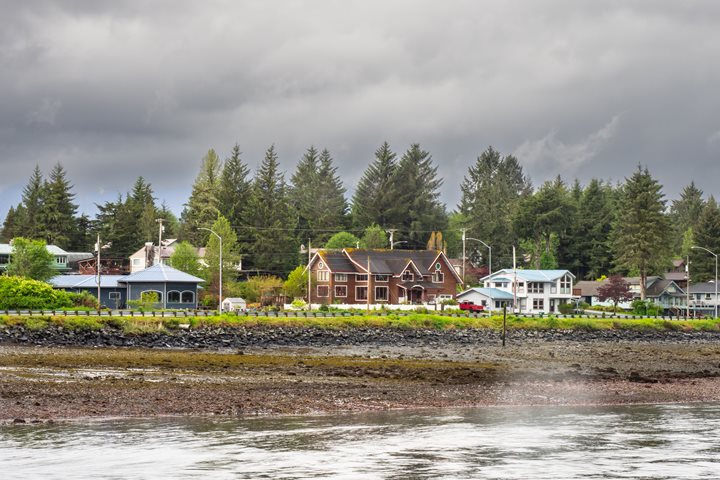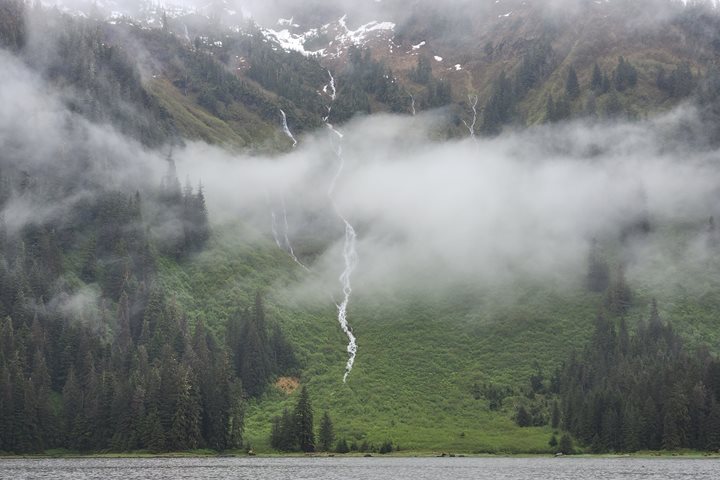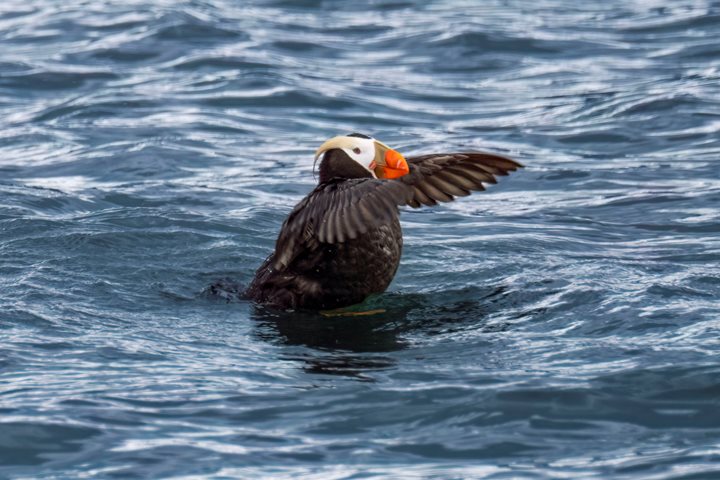We awoke well within Endicott Arm, a fjord deeply cut into the Coast Range of Southeast Alaska. Our day started early with a sighting of a black bear. Though black bears are far more abundant in Southeast than browns, we see them less often. Perhaps the steep sides of this fjord, which preclude salmon, make this less attractive to brown bears, hence more attractive to blacks. The black bear was feeding in the intertidal zone. Like people, bears love the intertidal, and together we find lots of food there.
After breakfast we dropped small boats to explore Dawes Glacier. Once in these intimate craft we began to perceive the huge scale of the landscape around us. Cut from granite and similar rocks, this fjord is particularly intense. Vast bare walls soared skyward. Huge waterfalls roared as they tumbled down precipitous cliffs.
We boated through water full of glacial flour, which, with phytoplankton, made a beautiful milky jade color. Icebergs were everywhere. We neared some that were huge and sculpted into ranks of stilettos or breaking waves. Other bergs were tiny as potatoes, or were carved into forms that suggested swans, whales, or dragons. The glacier was impressive. As is usually the case, it was hard to get an idea of the size of this river of ice. But the wall before us, three-quarters of a mile wide, towered the height of a twenty-five story building. We hoped for calving and were not disappointed. We saw some impressive falling ice, including the steady collapse of an ice cave and one submarine calving. The grandeur of these events gave perspective to the monstrous size of some of the floating bergs we had passed.
In the afternoon we boated into Ford’s Terror. Many fjords, while impressively deep, have shallow entrances. In some places these shallow spots form whitewater with every changing tide. Because of the rapids that guard Ford’s Terror we are able to enter only when slack tide falls at just the right hour. Despite good timing, currents were impressive at the fjord’s mouth. Once inside we could see why John Muir called this place “Yosemite Bay.” The topography, though more intimate than Endicott, was even more intense. Cliffs hung over the inlet and falls like ribbons stitched saltwater to sky. At the base of one particularly thunderous waterfall stood a dipper chick, patiently waiting for its parents to bring yet another meal wrung from the rapids.
Once back at the ship some people, with perhaps more gumption than sense, made like a dipper. In a “polar plunge” they took a quick swim in Endicott’s chilly water.
And at last we gathered in the lounge to see the group slideshow, the photos that we have gathered together in our travels in Alaska. How much we have to remember and share!







